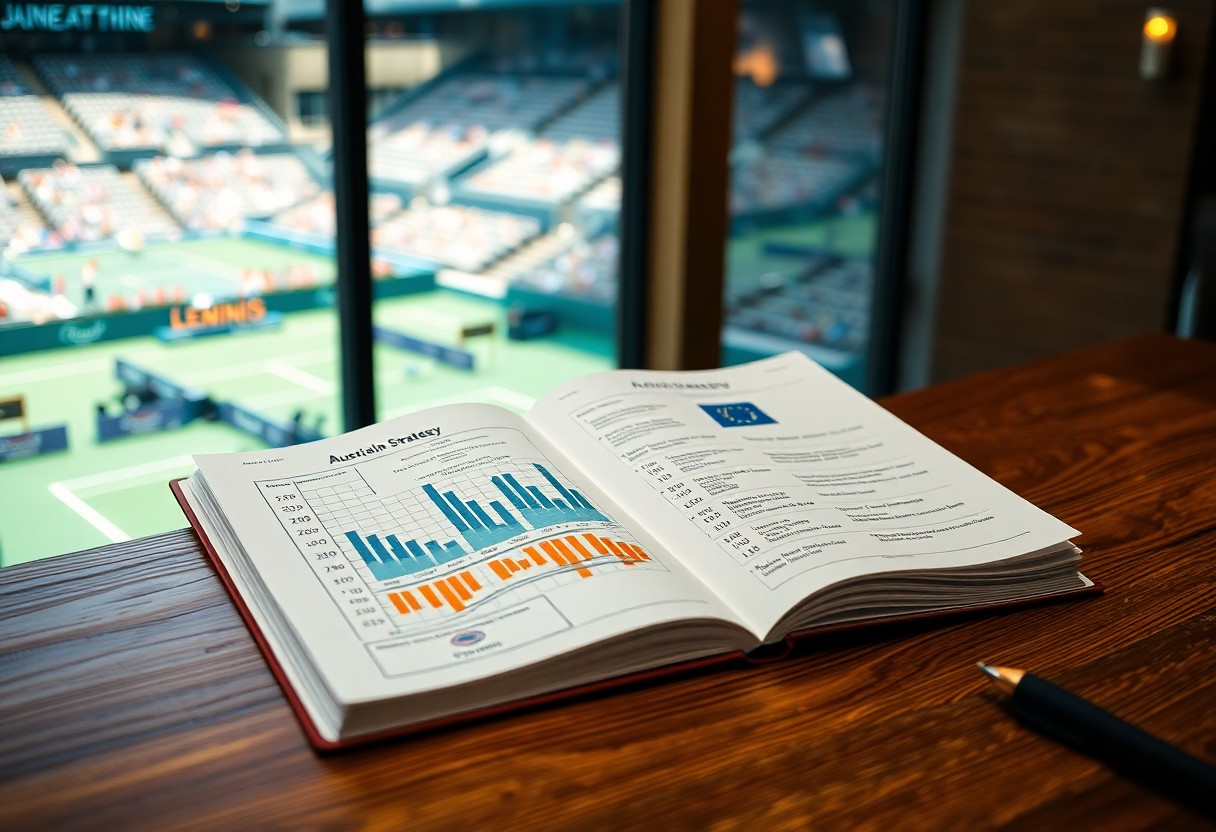Many tennis enthusiasts consider the Australian Open one of the sport’s most thrilling Grand Slam tournaments, where you’ve witnessed countless legendary moments that have shaped tennis history. From epic five-set battles in the scorching Melbourne heat to career-defining victories by tennis legends, the tournament has delivered unforgettable drama since 1905. You’ll discover how this championship has produced some of the most emotionally charged comebacks, record-breaking performances, and shocking upsets in professional tennis. Whether you’re a longtime fan or new to the sport, these iconic moments showcase why the Australian Open continues to captivate audiences worldwide with its unique blend of athletic excellence and compelling storytelling.
A Change of Venue: The Move to Melbourne Park
You witnessed a pivotal transformation when the Australian Open relocated from Kooyong Lawn Tennis Club to Melbourne Park in 1988. This monumental shift marked the tournament’s evolution from an intimate grass-court event to a modern hard-court spectacle that could accommodate massive crowds. The move represented more than just a change of address – it signaled Australia’s commitment to elevating their Grand Slam to compete with Wimbledon, Roland Garros, and the US Open on the global stage.
Historical Significance of the Relocation
The relocation fundamentally altered tennis history by transforming the Australian Open from the “forgotten Grand Slam” into a premier sporting destination. At Kooyong, you would have experienced matches on grass courts with limited seating capacity, often playing to sparse crowds due to Australia’s geographic isolation. Melbourne Park’s hard courts and expanded infrastructure attracted top players who previously skipped the tournament, while the January timing in Melbourne’s vibrant summer atmosphere created an entirely new identity for the championship.
The Evolution of Facilities and Fan Experience
Melbourne Park revolutionized your tournament experience with purpose-built facilities designed specifically for Grand Slam tennis. The centerpiece Rod Laver Arena, completed in 1988, provided 15,000 seats compared to Kooyong’s modest capacity. You gained access to multiple show courts, practice facilities, and hospitality areas that transformed the Australian Open into a comprehensive entertainment destination rather than simply a tennis tournament.
Your modern Australian Open experience showcases continuous innovation that began with that 1988 move. The addition of a retractable roof on Rod Laver Arena in 2000 eliminated weather delays, while Margaret Court Arena received its own roof in 2015. You can now enjoy climate-controlled environments, enhanced food courts, interactive fan zones, and the famous Garden Square entertainment precinct. The tournament’s capacity expanded from approximately 25,000 daily patrons at Kooyong to over 80,000 at Melbourne Park during peak days. Advanced court surfaces provide consistent playing conditions, while state-of-the-art broadcasting facilities ensure global audiences receive premium coverage. These improvements directly contributed to record prize money increases – from $1.4 million total in 1988 to over $75 million in recent years – attracting the world’s best players and creating the electric atmosphere you experience today.
Legendary Showdowns That Shook the Court
You’ve witnessed tennis history unfold countless times at Melbourne Park, where the sport’s greatest champions have delivered performances that transcend mere competition. The Australian Open’s hard courts have hosted battles that redefined what’s possible in tennis, creating moments so electrifying they still give you goosebumps decades later. From five-set marathons lasting nearly six hours to comeback victories that seemed impossible, these legendary showdowns showcase why the Australian Open consistently produces the most memorable matches in tennis.
The Rivalry Between Federer and Nadal
Your appreciation for tennis artistry reaches its peak when you watch Federer and Nadal clash at the Australian Open. Their 2009 final stands as perhaps the greatest match ever played, with Nadal claiming his first Australian Open title in a five-set thriller that lasted 4 hours and 23 minutes. You witnessed Federer’s emotional breakdown during the trophy ceremony, tears streaming as he struggled to speak, while Nadal’s gracious consolation showed the mutual respect that defined their rivalry. Their contrasting styles – Federer’s elegant precision against Nadal’s relentless power – created tennis poetry that elevated the sport to new heights.
The Drama of the 2012 Men’s Final
You experienced tennis history when Novak Djokovic and Rafael Nadal battled for 5 hours and 53 minutes in what became the longest Grand Slam final ever played. The match stretched past 1:30 AM local time, with both players pushing their physical and mental limits beyond what seemed humanly possible. Djokovic’s victory marked his third consecutive Grand Slam title, but you watched him collapse to the court in exhaustion, barely able to celebrate after the grueling encounter that redefined endurance in professional tennis.
The 2012 final transcended sport, becoming a test of human willpower that captivated audiences worldwide. You saw both players cramping, struggling to serve, and yet refusing to surrender as the match quality remarkably remained at championship level despite the physical toll. Djokovic saved a championship point in the fourth set, displaying the mental fortitude that would define his career, while Nadal’s relentless pursuit of every ball showcased why he’s considered the ultimate competitor. The final set alone lasted 88 minutes, with momentum shifting repeatedly as both champions dug deeper than ever before. Your understanding of what’s possible in tennis expanded watching these gladiators push beyond exhaustion, creating a blueprint for future generations about the price of greatness at the highest level.
Breakthrough Stars: When Underdogs Became Champions
You’ll witness some of tennis’s most inspiring stories when underdogs seize their moment at Melbourne Park. The Australian Open has consistently provided the perfect stage for breakthrough champions who defied expectations and rankings. From unseeded players claiming their first Grand Slam titles to local heroes capturing the hearts of home crowds, these Cinderella stories showcase the unpredictable nature of tennis at its finest. Pat Cash’s 1987 Wimbledon triumph began with his Australian Open breakthrough, while Goran Ivanišević’s eventual Grand Slam success had roots in his early Melbourne performances. These moments prove that rankings mean nothing when determination meets opportunity on the blue courts of Melbourne.
The Rise of Mark Philippoussis
Mark Philippoussis embodied the raw power and potential that Australian tennis fans craved during the late 1990s. Standing 6’5″ with a thunderous serve reaching 140 mph consistently, “The Scud” became a household name after his electrifying run to the 1998 US Open fourth round. His booming forehand and aggressive net play made him a crowd favorite at Melbourne Park, where he reached the fourth round three times between 1996-2000. Though injuries hampered his career, Philippoussis demonstrated that Australian tennis possessed the firepower to compete with the world’s elite, inspiring a generation of young players.
Ashleigh Barty’s Triumphant Return to Tennis
Ashleigh Barty’s 2022 Australian Open victory represented the culmination of one of tennis’s most remarkable comeback stories. After taking an 18-month hiatus from tennis in 2014 to play professional cricket, Barty returned with renewed perspective and mental fortitude. Her triumph at Melbourne Park made her the first Australian woman to win the Australian Open singles title since Chris O’Neil in 1978. The victory was particularly sweet as she defeated Danielle Collins in straight sets, showcasing her signature slice backhand and tactical brilliance before a roaring home crowd.
You can trace Barty’s path to Australian Open glory through her methodical rise up the rankings following her tennis return in 2016. Her unique playing style, featuring crafty slice shots and aggressive net approaches, puzzled opponents accustomed to baseline power games. The Indigenous Australian’s success carried deeper significance, as she became a role model for young Aboriginal athletes nationwide. Her emotional celebration after match point, falling to her knees on Rod Laver Arena, captured the essence of a champion who had overcome self-doubt and career uncertainty. Barty’s coaching team, led by Craig Morris, had carefully managed her schedule to peak at her home Grand Slam, implementing strategic rest periods and mental health practices that proved vital to her breakthrough moment.
Controversial Moments That Defined Championships
You’ll find that the Australian Open’s most heated controversies have often overshadowed brilliant tennis, creating moments that fans debate decades later. Line call disputes, behavioral violations, and officiating decisions have repeatedly thrust the tournament into global headlines for all the wrong reasons. These incidents didn’t just affect individual matches—they fundamentally changed how tennis handles conflict resolution and player conduct standards across all professional tournaments.
The 1988 Women’s Final Controversy
You witness tennis history’s most contentious final when Steffi Graf faced Chris Evert in 1988, where multiple questionable line calls heavily favored Graf during crucial points. Evert’s visible frustration with the officiating reached a boiling point in the second set, as she argued several calls that television replays later showed were incorrect. Graf won 6-1, 7-6, but the victory remained tainted by widespread criticism of the match officials, leading to immediate calls for electronic line-calling systems that wouldn’t be implemented for another two decades.
On-Court Altercations and Their Aftermath
You’ve probably seen the explosive confrontations that have erupted between players and officials at Melbourne Park, with John McEnroe’s 1990 disqualification standing as the tournament’s most shocking ejection. His verbal assault on chair umpire Gerry Armstrong during a fourth-round match resulted in the first-ever Grand Slam disqualification for unsportsmanlike conduct. The incident cost McEnroe $6,500 in fines and a two-month suspension, forever changing how tennis authorities handle player misconduct.
Beyond McEnroe’s infamous exit, you’ll discover that the Australian Open has witnessed numerous heated exchanges that reshaped professional tennis protocols. Lleyton Hewitt’s 2001 accusations of racial bias against chair umpire Andreas Egli during his match against James Blake sparked international controversy and led to mandatory cultural sensitivity training for all ATP officials. Similarly, Serena Williams’ 2009 semifinal outburst against Kim Clijsters resulted in a $175,000 fine and two-year probationary period, demonstrating how the tournament’s zero-tolerance policy evolved. These incidents collectively forced tennis governing bodies to establish clearer behavioral guidelines, implement mandatory anger management programs for repeat offenders, and create more structured appeal processes for disputed calls, fundamentally transforming how you experience modern professional tennis today.
The Impact of Weather on Historic Matches
Melbourne’s unpredictable climate has shaped some of the tournament’s most memorable encounters, turning routine matches into legendary battles of endurance. You’ll find that extreme heat, sudden downpours, and swirling winds have all played decisive roles in determining champions throughout Australian Open history. Temperatures exceeding 40°C (104°F) have pushed players to their physical limits, while unexpected rain delays have completely shifted match momentum. The tournament’s unique position in the tennis calendar means you’re witnessing athletes compete in conditions that would halt play at other Grand Slams, creating drama that extends far beyond standard court competition.
The 2014 Extreme Heat Policy and Player Responses
Temperatures soared to 42.2°C (108°F) during the 2014 tournament, prompting officials to implement their newly revised Extreme Heat Policy for the first time. You witnessed players like Frank Dancevic collapsing on court and hallucinating during his match against Benoit Paire, while Caroline Wozniacki suffered heat-related illness. The policy allowed for roof closures on covered courts and extended breaks between sets when conditions became dangerous. Ball kids fainted, spectators sought medical attention, and several matches were suspended, fundamentally changing how the tournament approaches player safety in extreme conditions.
Rain Delays and Their Influence on Finals
Sudden Melbourne showers have dramatically altered the course of championship matches, with the 2012 men’s final between Djokovic and Nadal suspended for nearly 24 hours due to persistent rain. You saw how these interruptions can completely shift psychological momentum, allowing trailing players to regroup and leading players to lose their rhythm. The delay often favors the younger or more physically fresh competitor, as extended breaks provide crucial recovery time during grueling five-set battles.
Rain delays create unique strategic challenges that you don’t see replicated in indoor tournaments. Players must maintain their physical warmth and mental focus during uncertain waiting periods, sometimes lasting several hours. The 2009 women’s final saw Serena Williams benefit from a rain interruption while trailing Dinara Safina, returning to court with renewed intensity that secured her fourth Australian Open title. Weather delays also affect crowd dynamics significantly – you’ll notice how the atmosphere changes when spectators return after lengthy breaks, often more subdued or alternatively more electric depending on the match situation. The installation of retractable roofs on Rod Laver Arena in 2006 and Margaret Court Arena in 2015 reduced but didn’t eliminate weather’s impact, as outer courts still remain vulnerable to Melbourne’s notorious climate swings.
Summing up
Now you understand how the Australian Open has delivered extraordinary moments that define tennis history. You’ve witnessed Djokovic’s physical and mental fortitude, Federer’s emotional farewell, and Serena Williams’ dominance across different eras. These iconic instances showcase why you continue to be captivated by this tournament year after year. From marathon matches to breakthrough victories, the Australian Open consistently provides you with unforgettable drama that transcends sport itself. Each January, you anticipate new legendary moments that will join this prestigious collection of tennis excellence.



